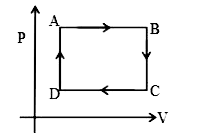Of the following reduction processes, correct processes are :
The correct Answer is:A, B, C, D
To determine which of the reduction processes listed in the question are correct, we will analyze each option based on the principles of metallurgy and thermodynamics.
1. Understanding Reduction Processes:
- Reduction is a chemical process where a substance gains electrons, often involving the removal of oxygen or the addition of hydrogen. In metallurgy, reduction is commonly used to extract metals from their ores.
2. Analyzing Each Option:
- Option 1: Iron Oxide + Carbon → Iron
- This reaction is a valid reduction process. Carbon can reduce iron oxide (FeO or Fe2O3) to iron (Fe) at high temperatures. This process is commonly used in blast furnaces.
- Option 2: Zinc Oxide + Carbon → Zinc
- This reaction is also a valid reduction process. Zinc oxide (ZnO) can be reduced to zinc (Zn) using carbon as a reducing agent at high temperatures (around 1673 K). This reaction is spontaneous under these conditions.
- Option 3: Ca3(PO4)2 + Carbon → Phosphorus
- This reaction is not a typical reduction process for phosphorus. Calcium phosphate does not directly yield phosphorus through carbon reduction. Phosphorus is usually obtained from phosphate rock through a different process, often involving high temperatures and silica.
- Option 4: Lead Oxide + Carbon → Lead
- This reaction is a valid reduction process. Lead oxide (PbO) can be reduced to lead (Pb) using carbon as a reducing agent. This is commonly done in metallurgy.
3. Conclusion:
- The correct reduction processes from the options provided are:
- Option 1: Iron Oxide + Carbon → Iron (Correct)
- Option 2: Zinc Oxide + Carbon → Zinc (Correct)
- Option 4: Lead Oxide + Carbon → Lead (Correct)
- Option 3 is incorrect.
Final Answer:
The correct reduction processes are Option 1, Option 2, and Option 4.
- Reduction is a chemical process where a substance gains electrons, often involving the removal of oxygen or the addition of hydrogen. In metallurgy, reduction is commonly used to extract metals from their ores.
- Option 1: Iron Oxide + Carbon → Iron
- This reaction is a valid reduction process. Carbon can reduce iron oxide (FeO or Fe2O3) to iron (Fe) at high temperatures. This process is commonly used in blast furnaces.
- Option 2: Zinc Oxide + Carbon → Zinc
- This reaction is also a valid reduction process. Zinc oxide (ZnO) can be reduced to zinc (Zn) using carbon as a reducing agent at high temperatures (around 1673 K). This reaction is spontaneous under these conditions.
- Option 3: Ca3(PO4)2 + Carbon → Phosphorus
- This reaction is not a typical reduction process for phosphorus. Calcium phosphate does not directly yield phosphorus through carbon reduction. Phosphorus is usually obtained from phosphate rock through a different process, often involving high temperatures and silica.
- Option 4: Lead Oxide + Carbon → Lead
- This reaction is a valid reduction process. Lead oxide (PbO) can be reduced to lead (Pb) using carbon as a reducing agent. This is commonly done in metallurgy.
- The correct reduction processes from the options provided are:
- Option 1: Iron Oxide + Carbon → Iron (Correct)
- Option 2: Zinc Oxide + Carbon → Zinc (Correct)
- Option 4: Lead Oxide + Carbon → Lead (Correct)
- Option 3 is incorrect.
The correct reduction processes are Option 1, Option 2, and Option 4.
Topper's Solved these Questions
- METALLURGYBOOK - VK JAISWAL ENGLISHCHAPTER - METALLURGYEXERCISE - MATCH THE COLUMN
20 Videos
- METALLURGYBOOK - VK JAISWAL ENGLISHCHAPTER - METALLURGYEXERCISE - ASSERTION-REASON TYPE QUESTIONS
29 Videos
- METALLURGYBOOK - VK JAISWAL ENGLISHCHAPTER - METALLURGYEXERCISE - Level 3 (Passive 7)
8 Videos
- ENVIRONMENTAL CHEMISTRYBOOK - VK JAISWAL ENGLISHCHAPTER - ENVIRONMENTAL CHEMISTRYEXERCISE - ASSERTION-REASON TYPE QUESTIONS
14 Videos
- p-BLOCK ELEMENTSBOOK - VK JAISWAL ENGLISHCHAPTER - p-BLOCK ELEMENTSEXERCISE - SUBJECTIVE PROBLEMS
35 Videos
Similar Questions
Knowledge Check
Which of the following process is correct for given P-V diagram.
 AAdiabatic processBIsothermal processCIsobaric processDIsochoric process
AAdiabatic processBIsothermal processCIsobaric processDIsochoric processWhich of the following is the correct sequence of processes involved in urine formation?
ASecretion, reabsorption, FiltrationBFiltration, Reabsorption, SecretionCReabsorption, Filtration, SecretionDReabsorption, Secretion, Filtration
Consider the following reduction processes :
(I) Fe2O3+C→Fe
(II) Al2O3+C→Al
(III) Pbo+C→Pb
(IV) Ca3(PO4)2+C+SiO2→P
The correct processe(s) is/ are
View SolutionAmong the following processes, select the process for which ΔS is positive.
View SolutionIn the following cyclic process is

The above process in the P-T coordinates is given as
View SolutionWhich of the following regarding the said processes is (are) correct?
View SolutionIt the following processes, identify the irreversible process :
View SolutionWhich of the following processes involve the roasting process ?
View Solution
